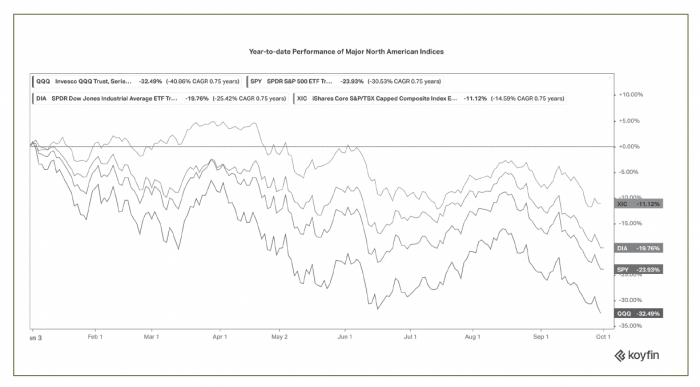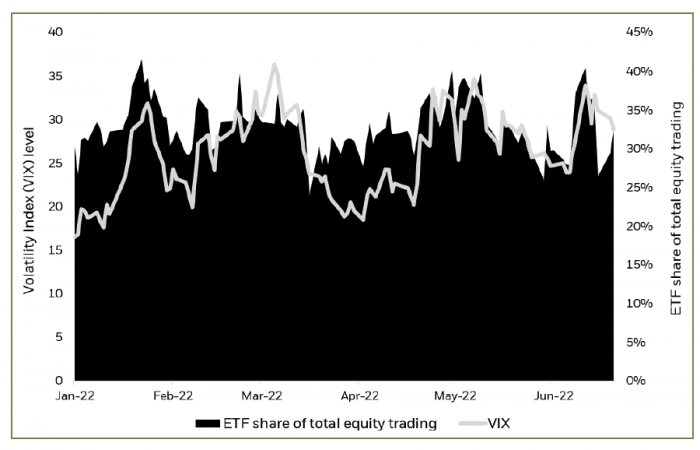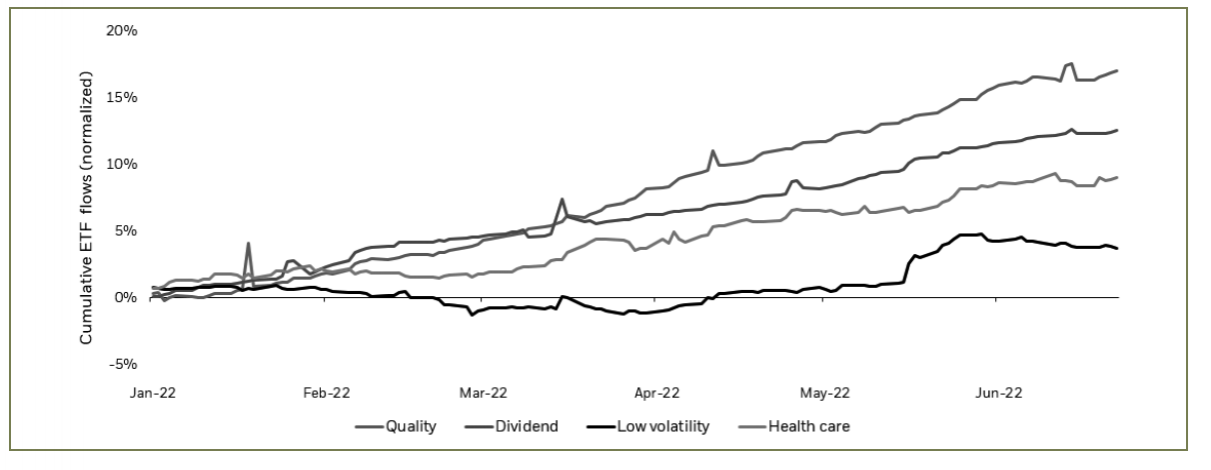Insights From ETFs: The importance of ETFs during times of volatility
2022 has proven to be one of the toughest for investing across nearly all asset classes. While uncertainty around inflation and recession have impacted all sectors in the equity asset class, rising interest rates have also resulted in fixed-income being a less secure investment compared to what we are used to. Individual stocks have been more difficult to manage in a portfolio and this has sadly resulted in some retail investors giving up on investing together.
We believe it is important for investors to stay invested, even in a bear market, because it is during these times that the best buying opportunities arise. However, not everyone has the tolerance or the time to stay up to date with individual stocks and maintain their portfolios. This is where ETFs can serve investors well, especially Do-It-Yourself (DIY) investors who want to “lay low” but stay invested until the market direction turns bullish again.
How Can Investing in ETFs Help With Volatility?
First, ETFs provide diversification and eliminate most company-specific risks, and this reduces overall portfolio volatility. It is not uncommon to see drawdowns of 70-80% from 52-week highs in some individual names, which many would have viewed as relatively stable companies, particularly in the tech sector.
On the other hand, many ETFs will hold companies that have seen a mix in the magnitude of drawdowns, resulting in most broad market ETFs seeing drawdowns of only ~10-30%. For example, we can see in the image below that even the Invesco QQQ Trust ETF, which is very tech-heavy, has “only” fallen 32% this year, while iShares Core S&P/TSX Capped Composite Index ETF (XIC) is only down 11%.

Investors turn to ETFs as volatility rises
The graph below shows the ebbs and flows of equity ETFs’ share of total equity trading as the VIX (a popular volatility index) rises and falls. As volatility rises, investors (retail and institutional) tend to lean toward ETFs as they are the intuitive low volatility option.

Investors flock to Quality
In addition to investors fleeing to ETFs and away from individual stocks, investors also (quite logically) have flocked to ETFs with a focus quality, and arguably this is reflected on the individual stock level as well (i.e., investors tend to focus on individual companies with high free cash flows and healthy balance sheets). Of course, this is due to the companies’ resilience during recessions.

Interestingly, we see that since the start of the year, “low volatility” ETFs have seen the least amount of accumulation in funds despite the heightened volatility we have seen this year. While dividend ETFs are of no surprise to us in terms of having high fund flows, a focus by investors on health care ETFs is an interesting point to note and may point toward more institutional buying due to its growth and strength as a defensive sector.
An investors friend in any market
ETFs continue to be an effective means of investing, even during these uncertain times. ETFs provide reduced risk through exposure to a basket of securities, and this is desirable during a risk-off market. In addition to diversification, ETFs provide investors with a variety of options and flexibility within their portfolios, allowing investors to shift from an aggressive to a more cautious approach to investing during uncertain times. What we think will be interesting to see is where funds will flow once the market begins to show a bit more risk appetite again. Until then, ETFs are a great way to stay invested.
Moez Mahrez, CFA, Analyst for 5i Research.ca
Disclosure: Authors, directors, partners and/or officers of 5i Research have a financial or other interest in XIT and ZRE.

